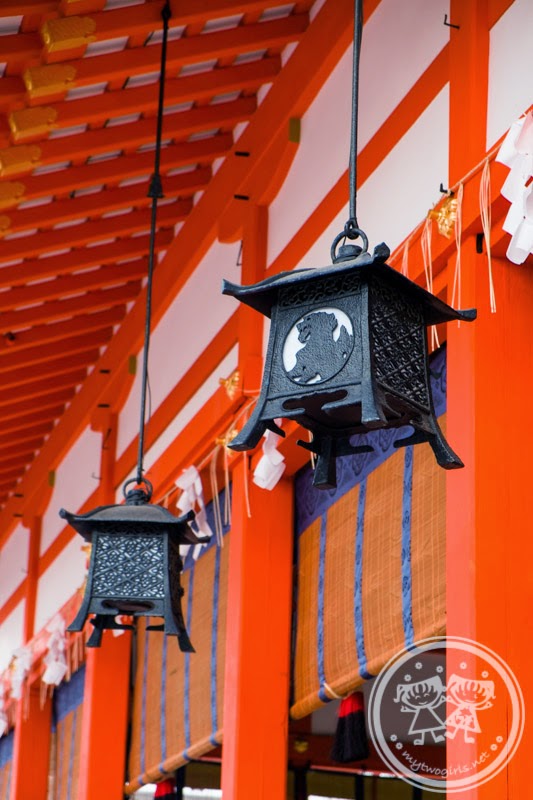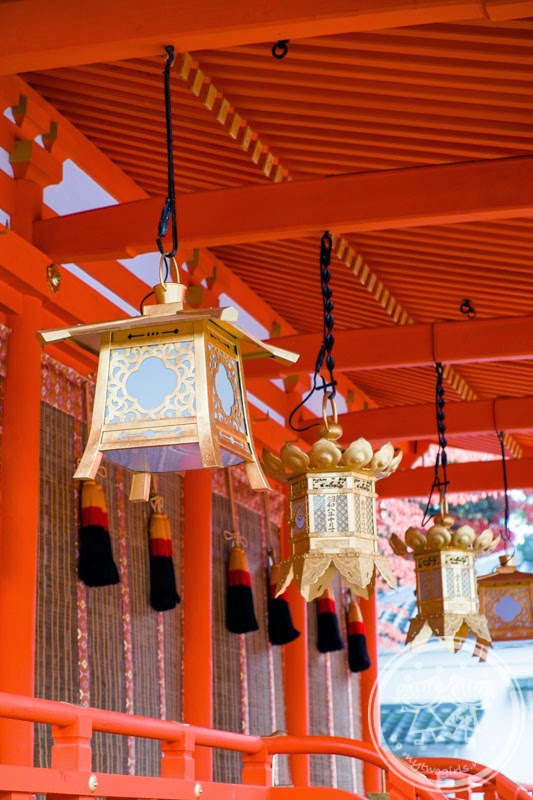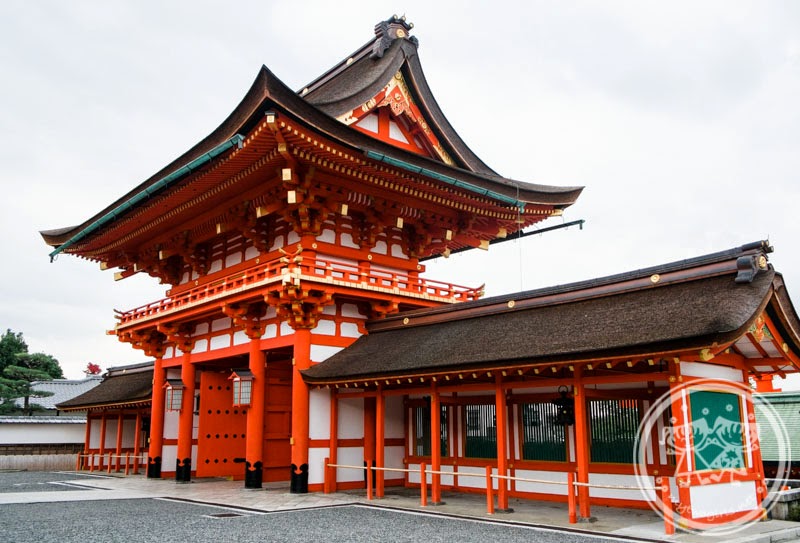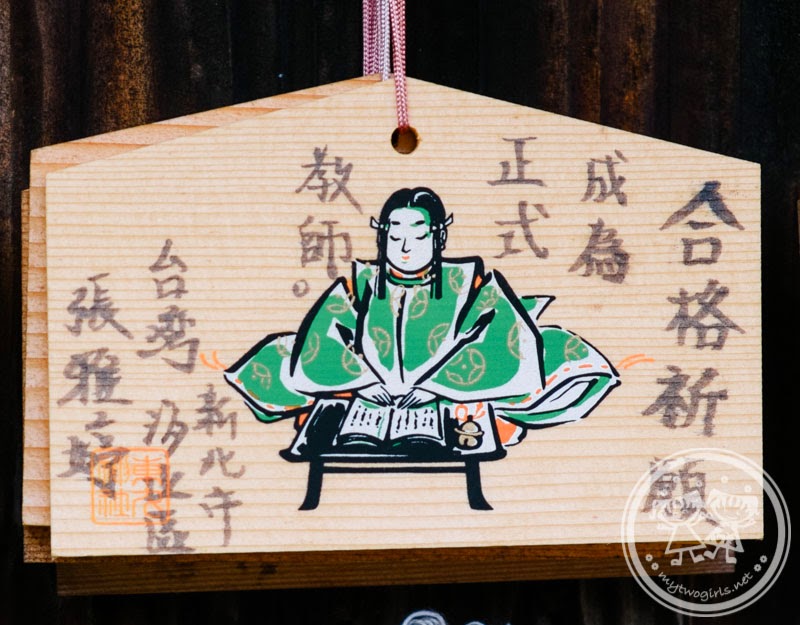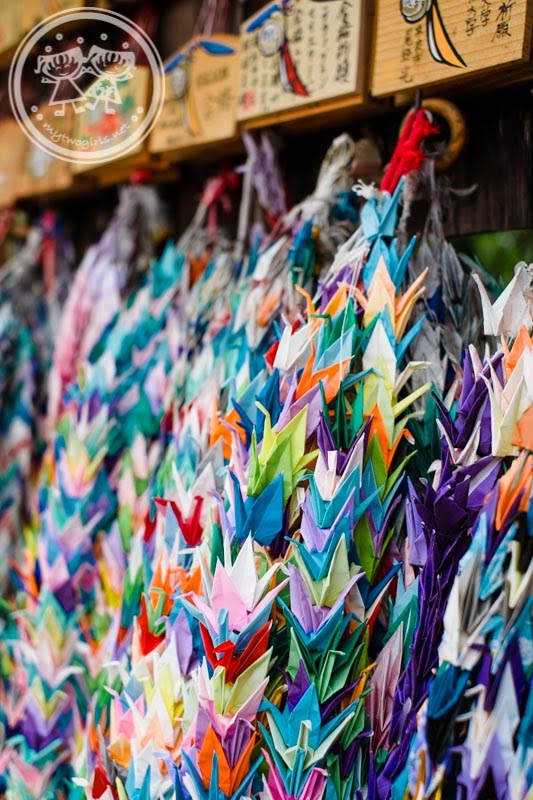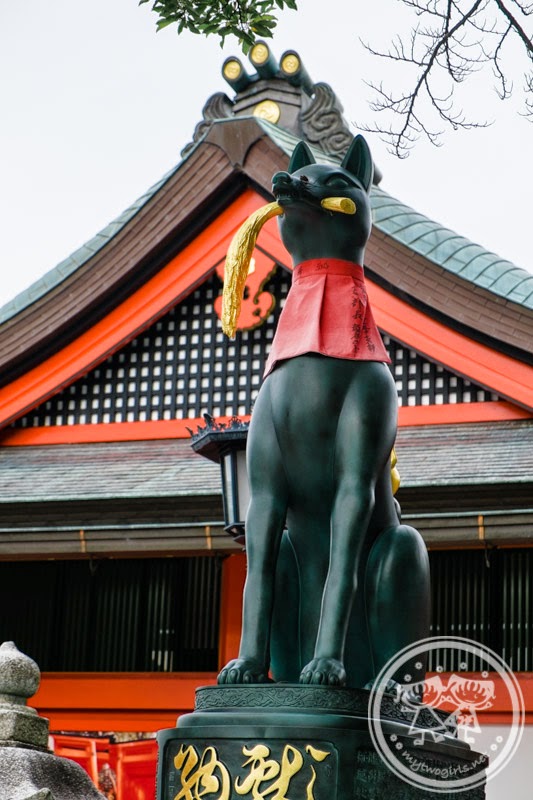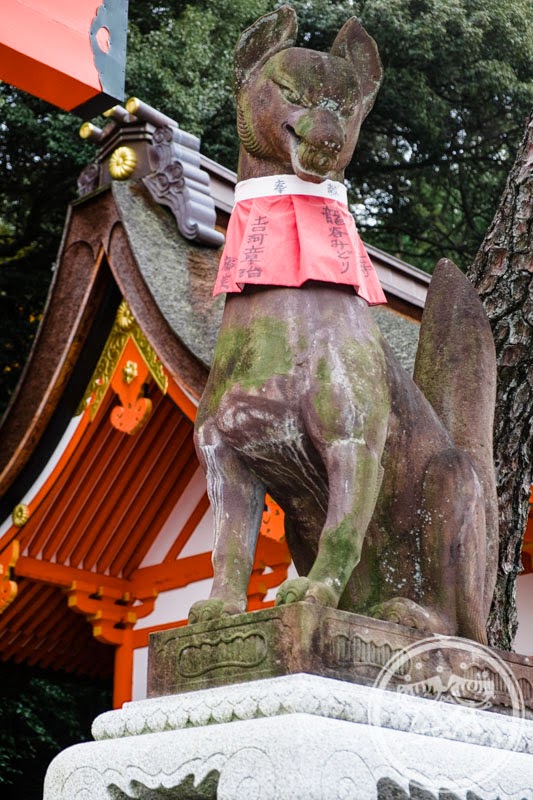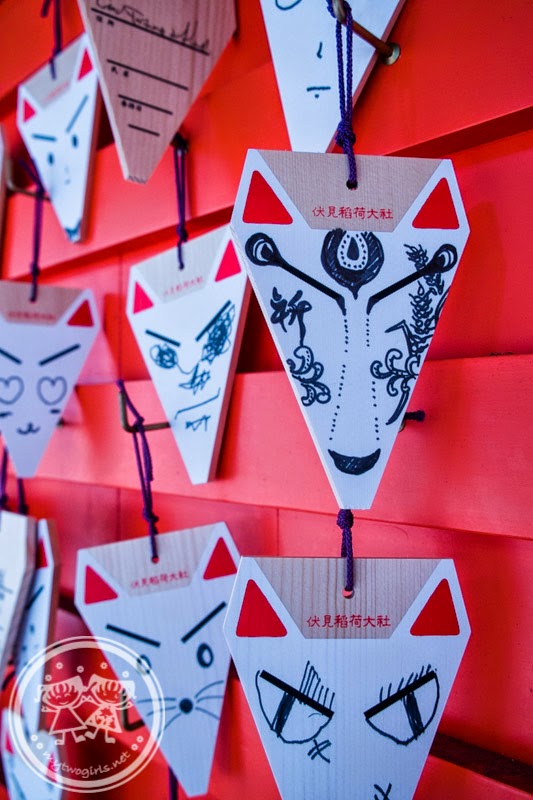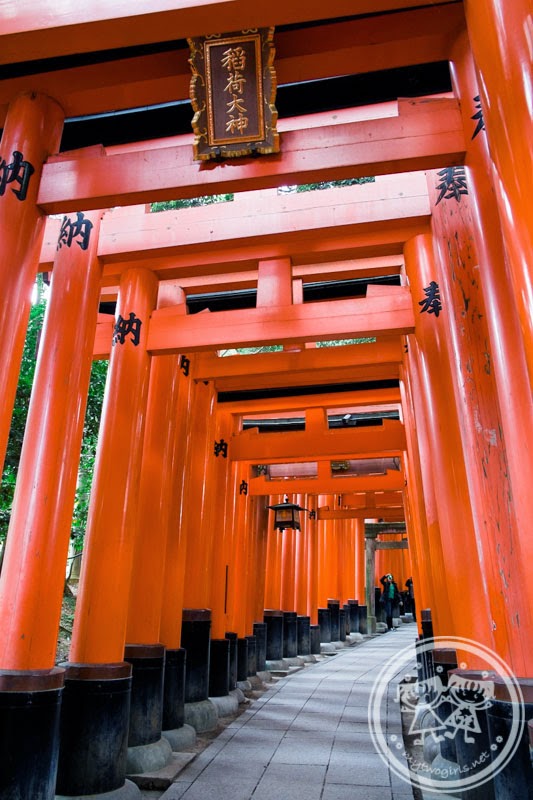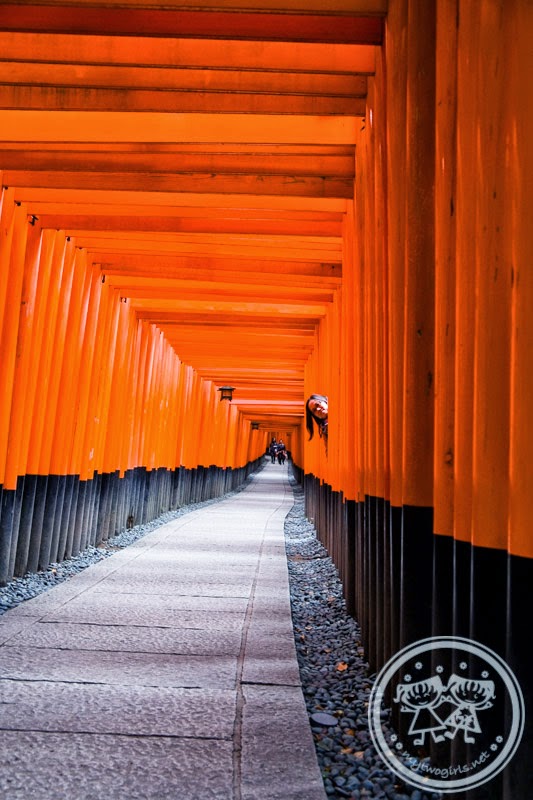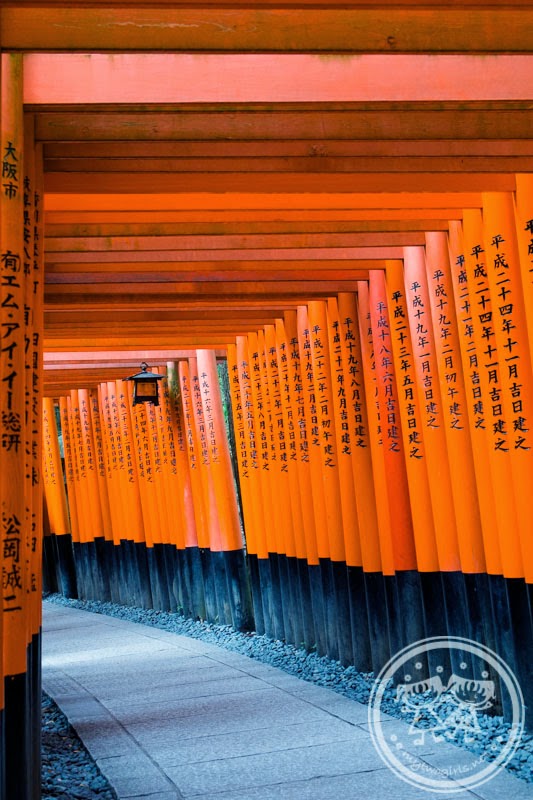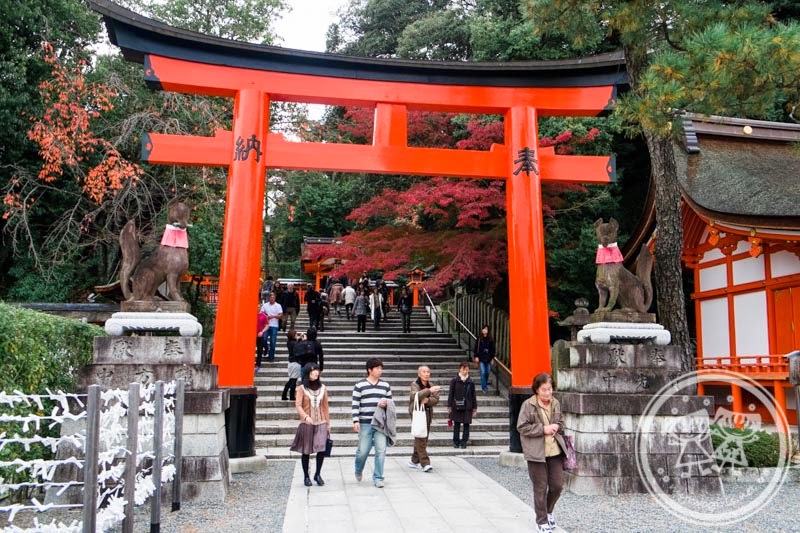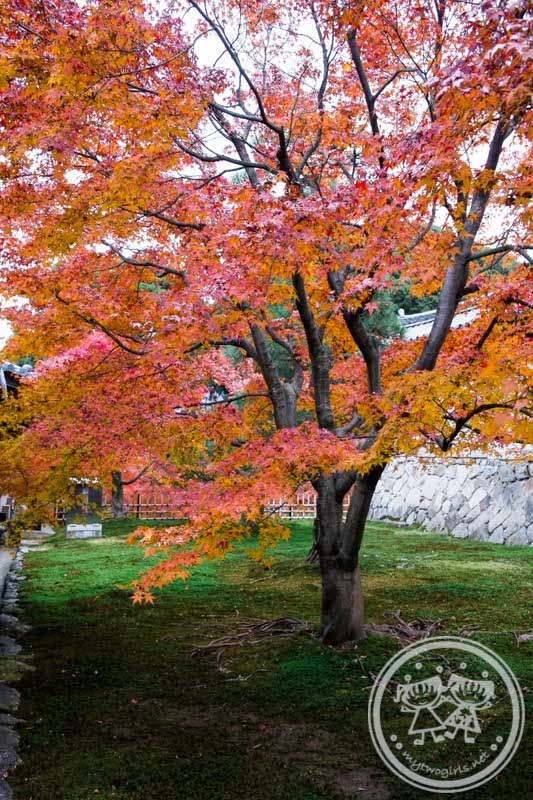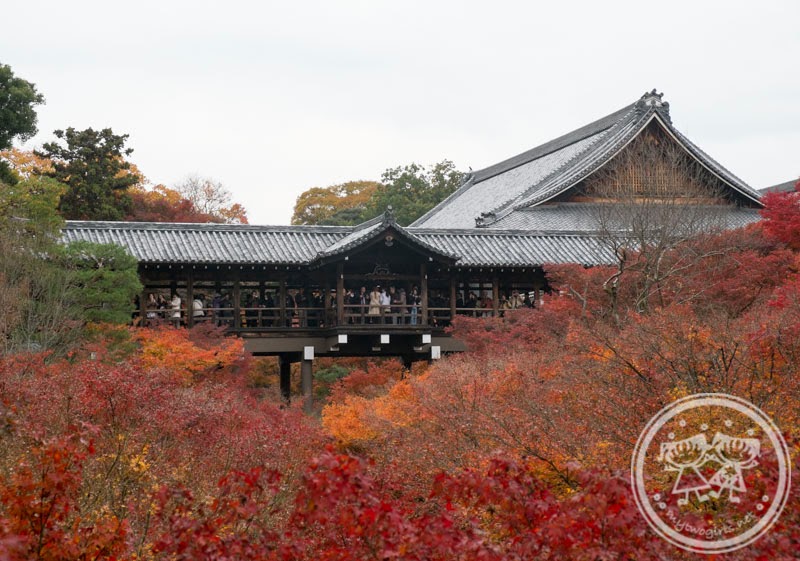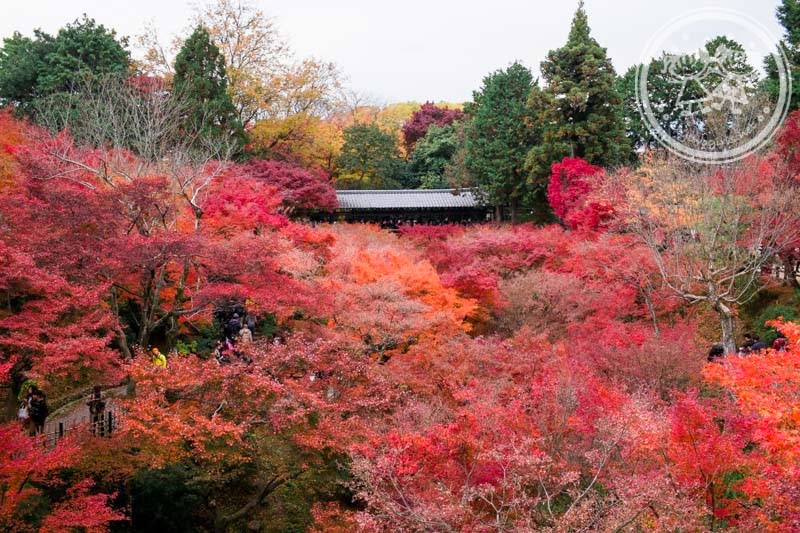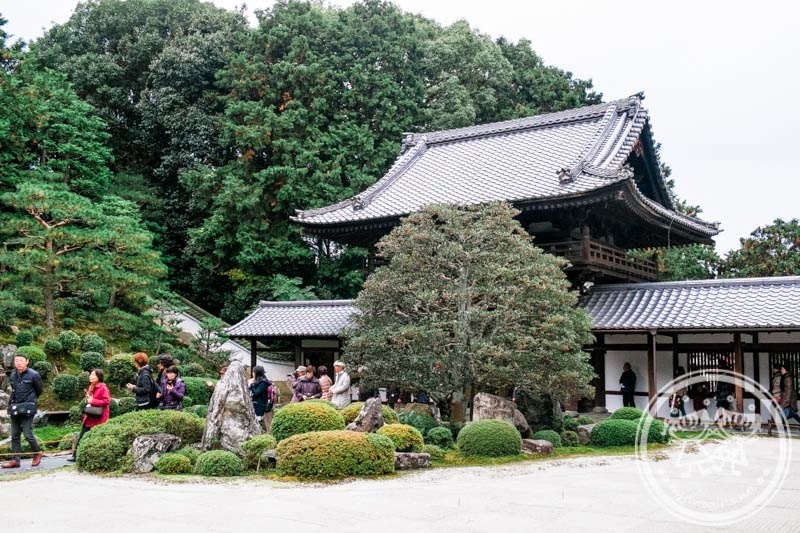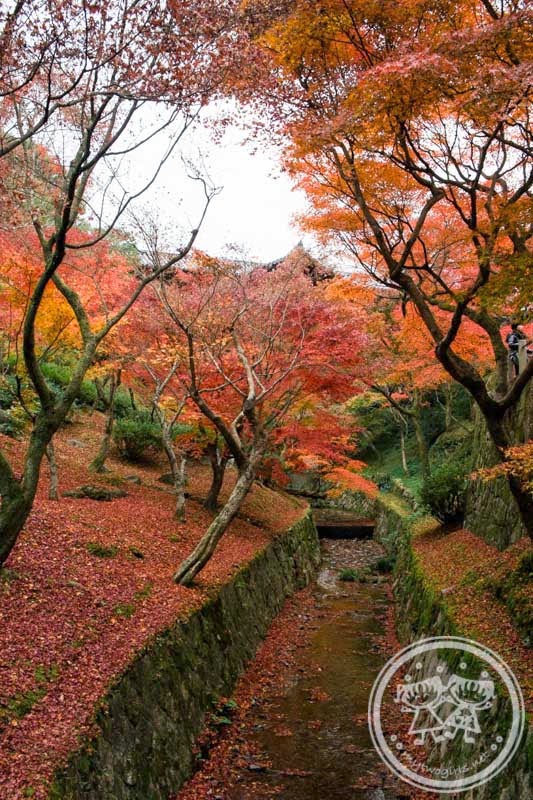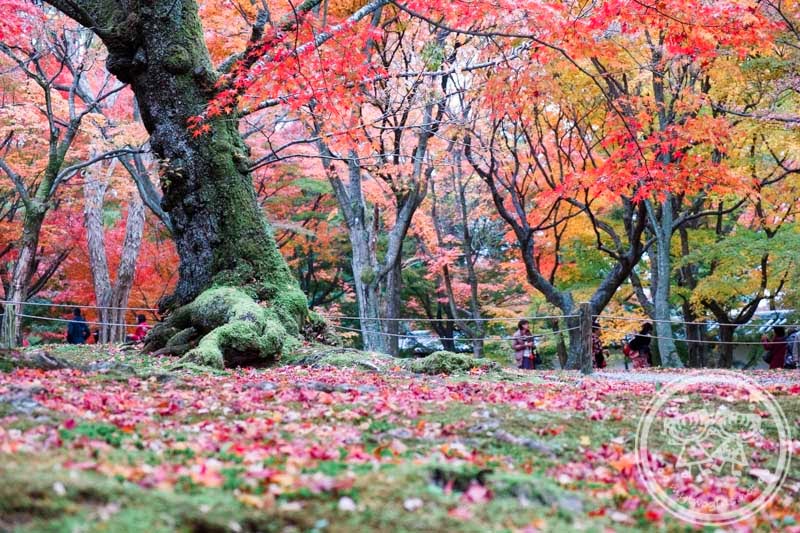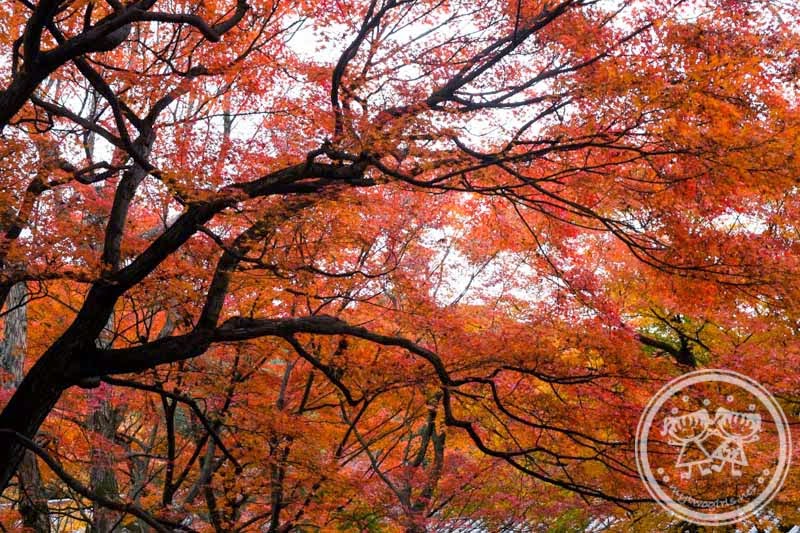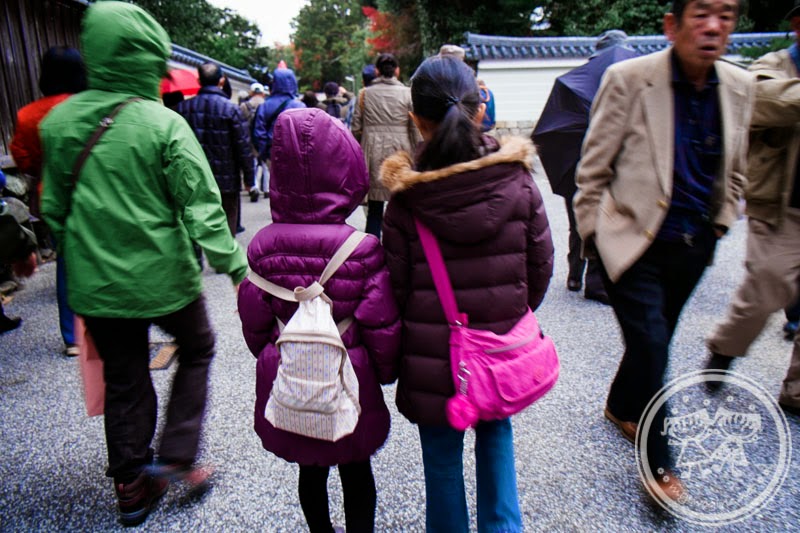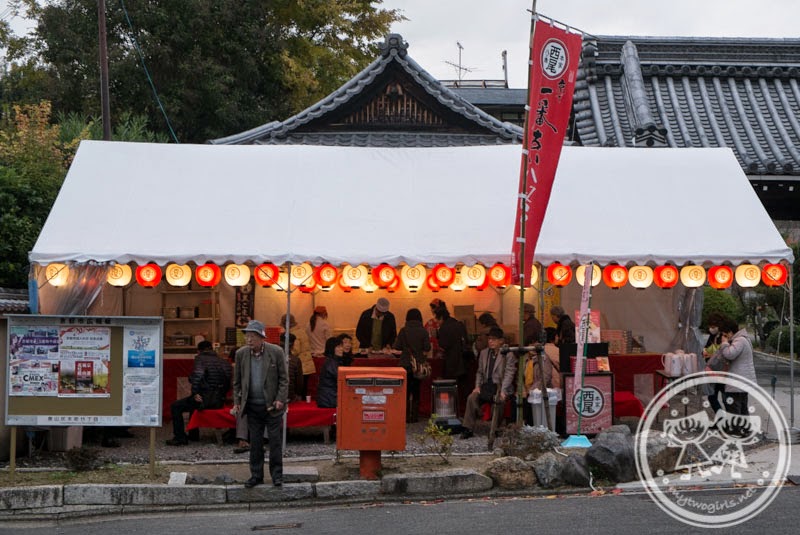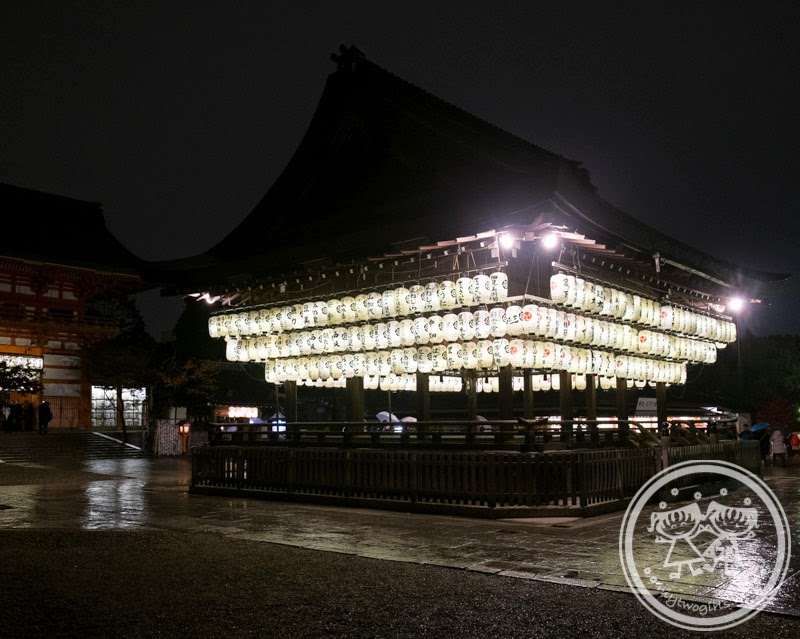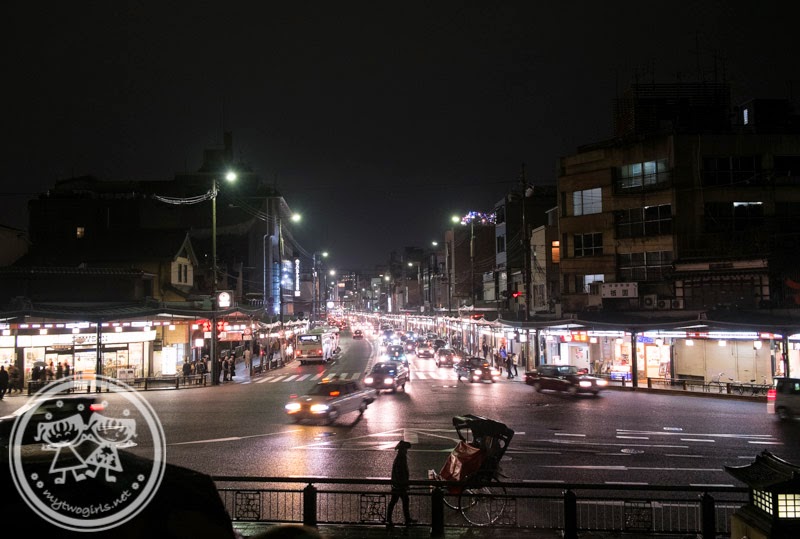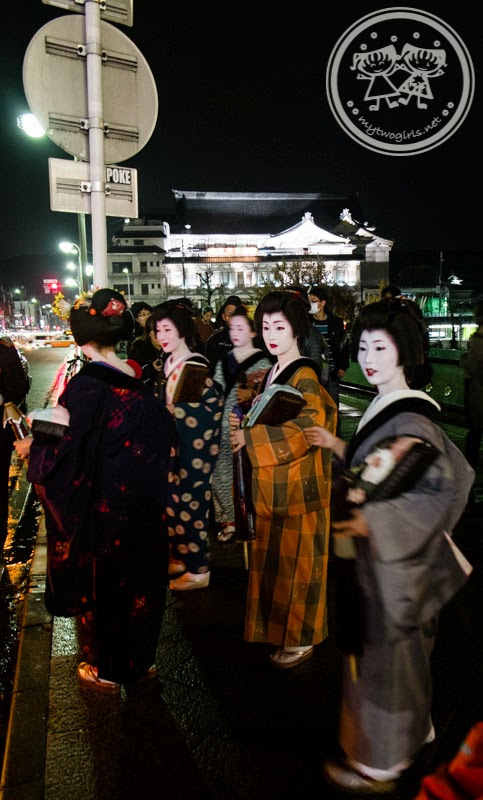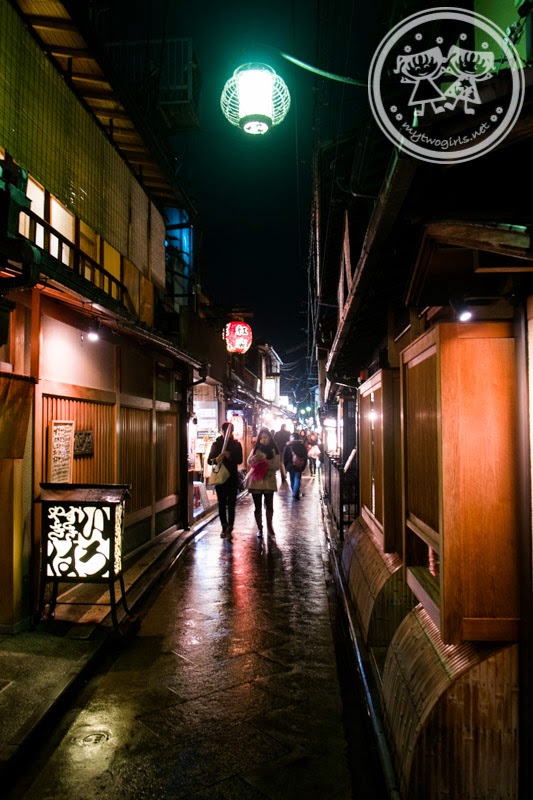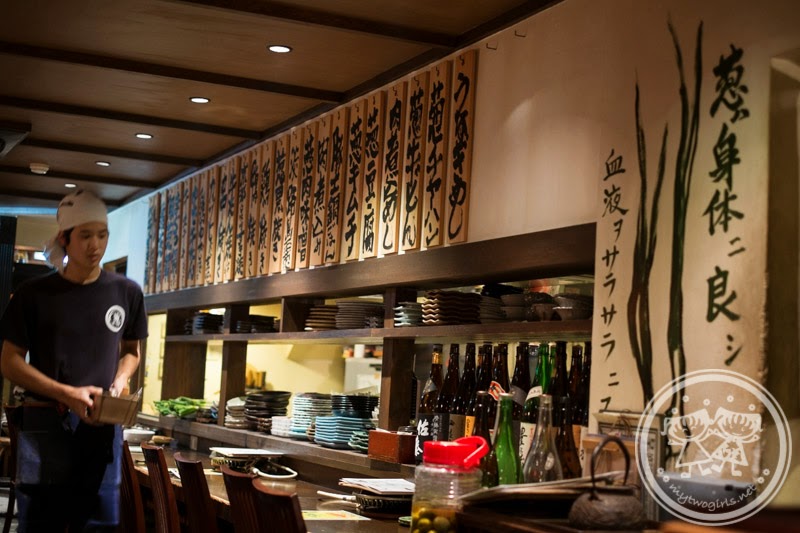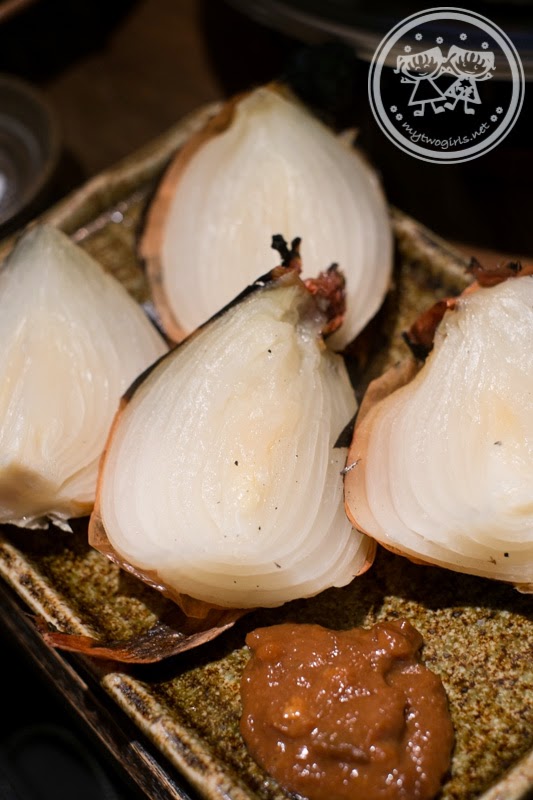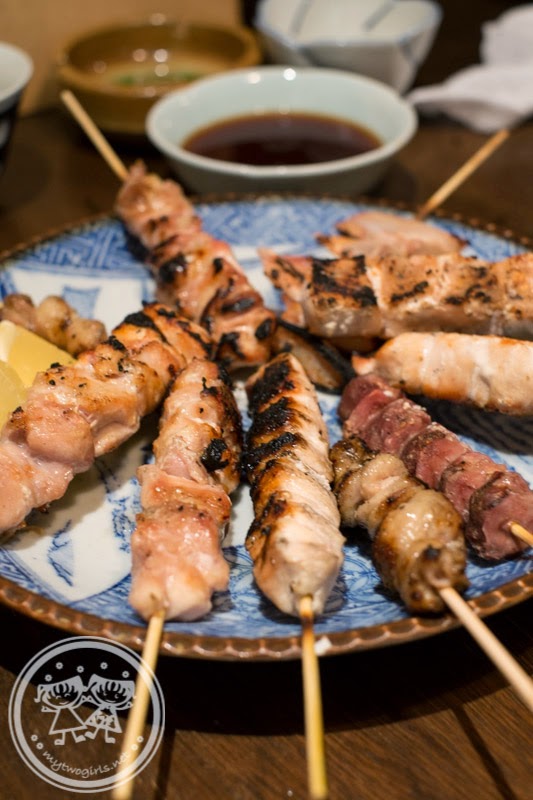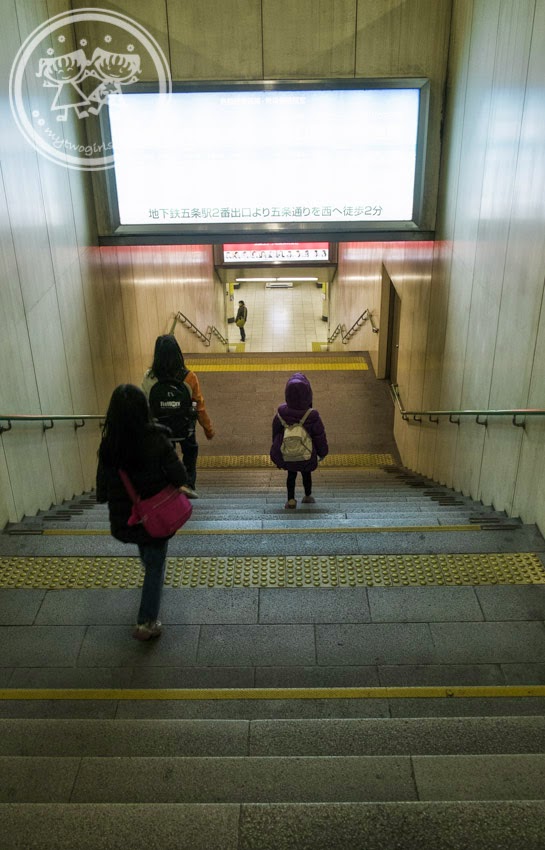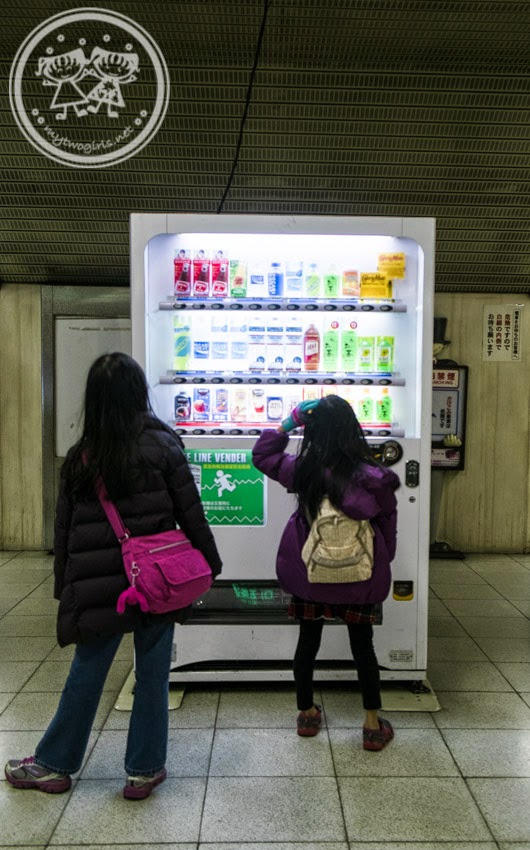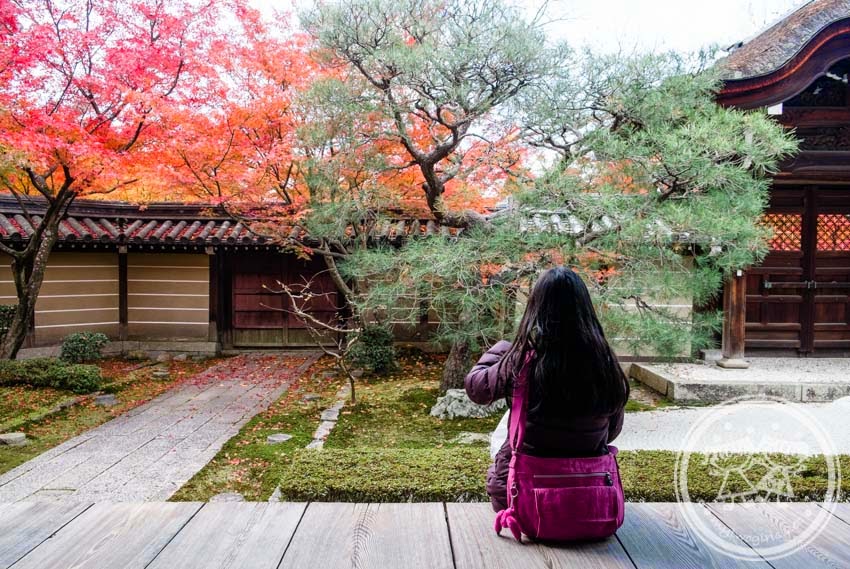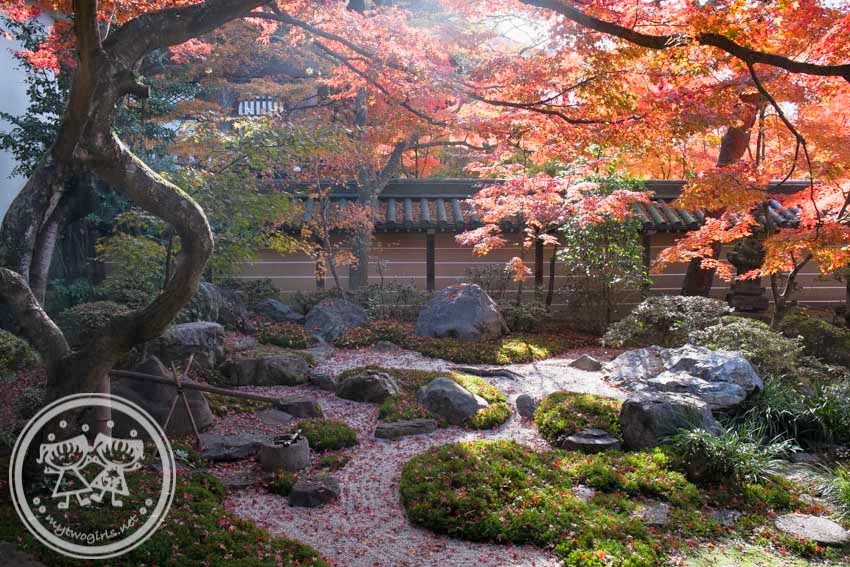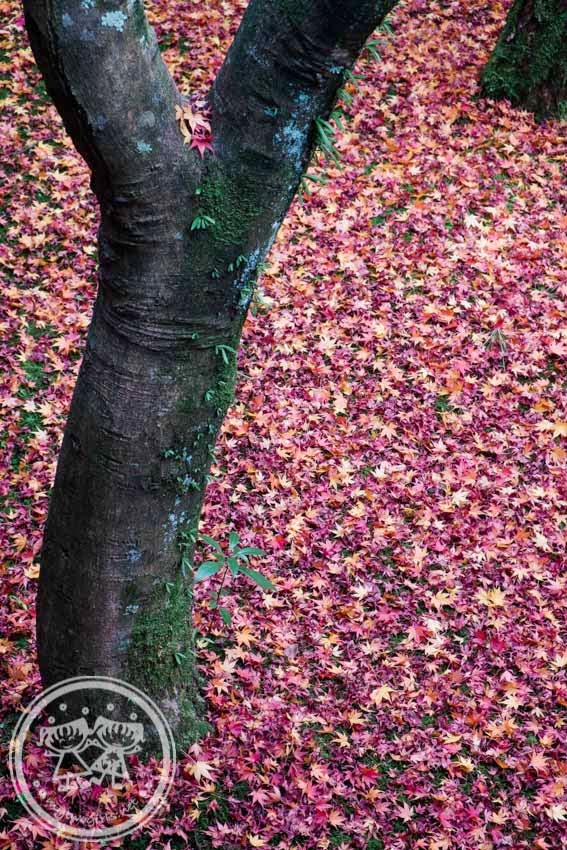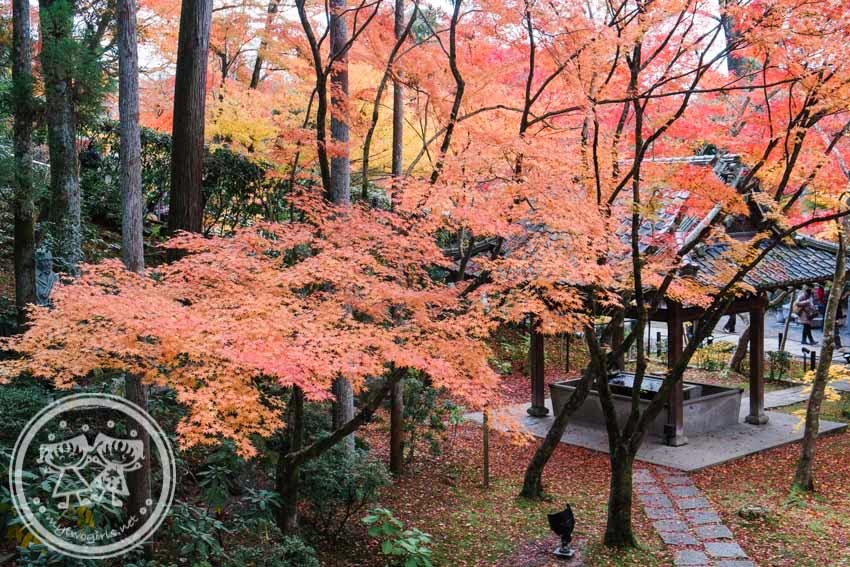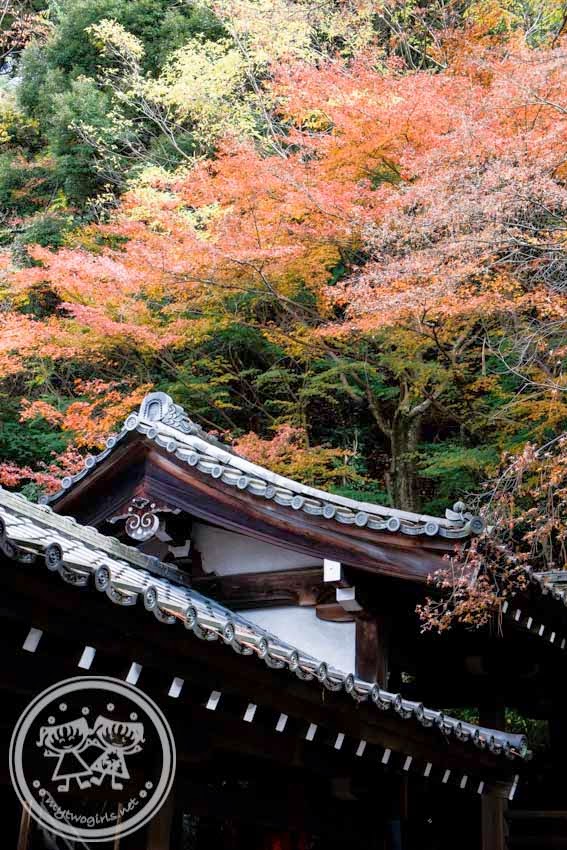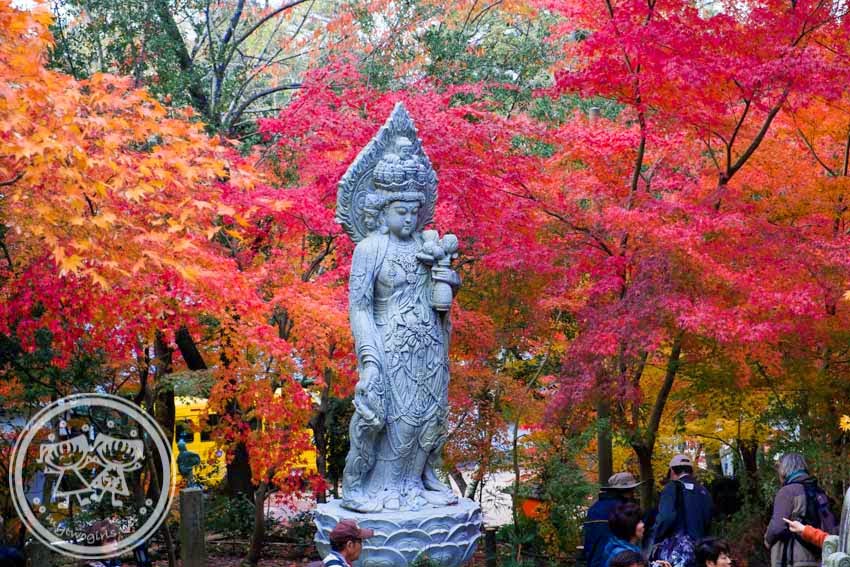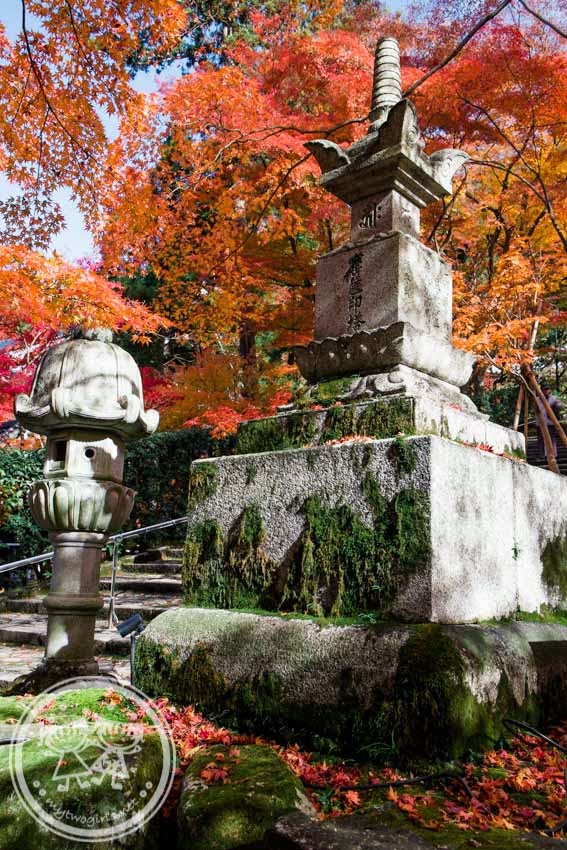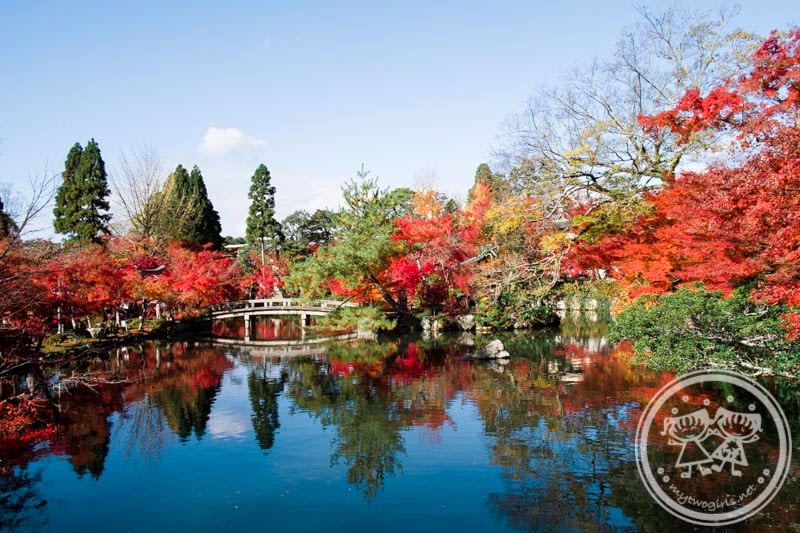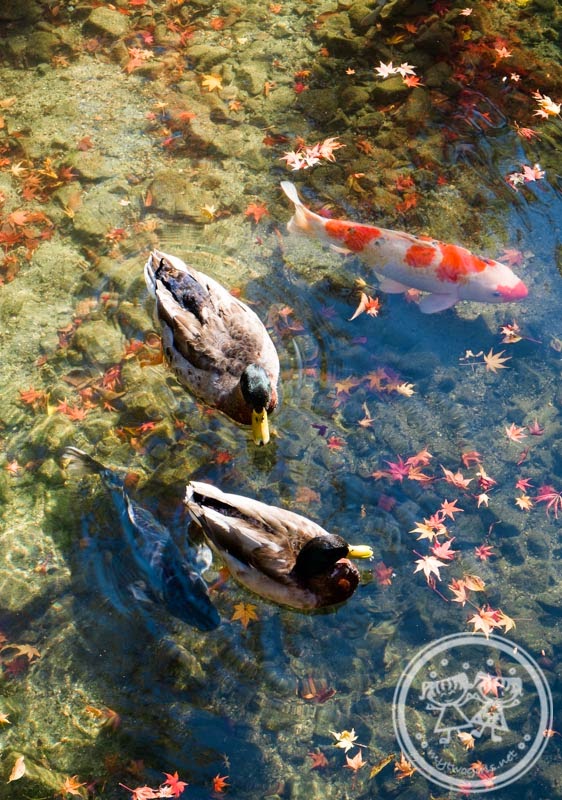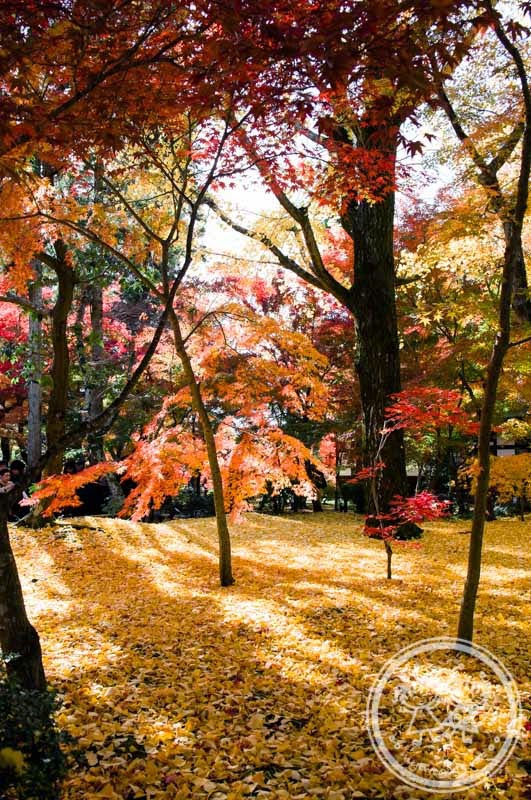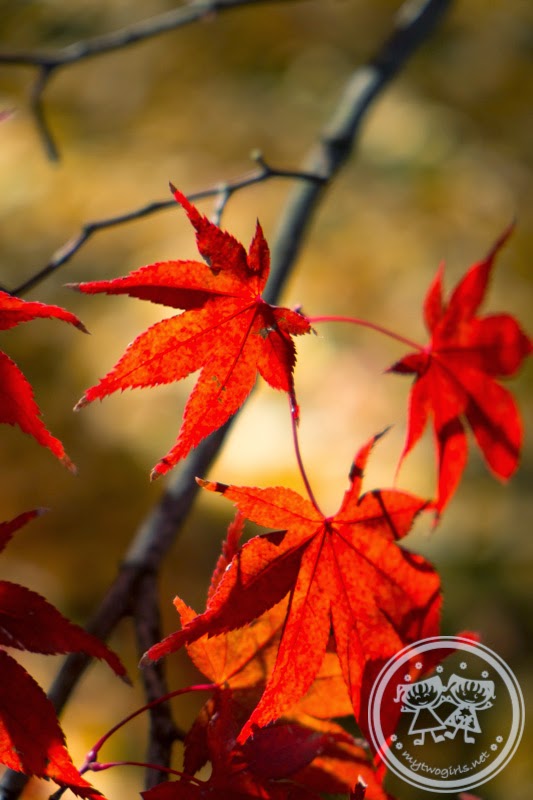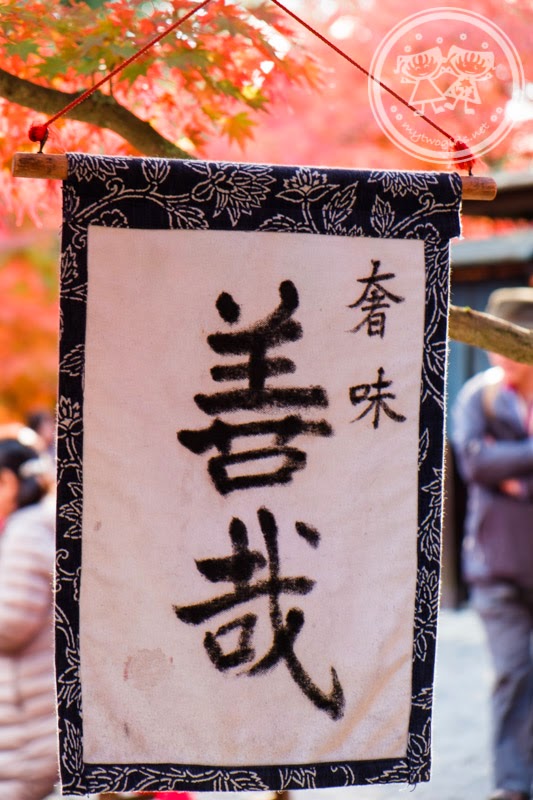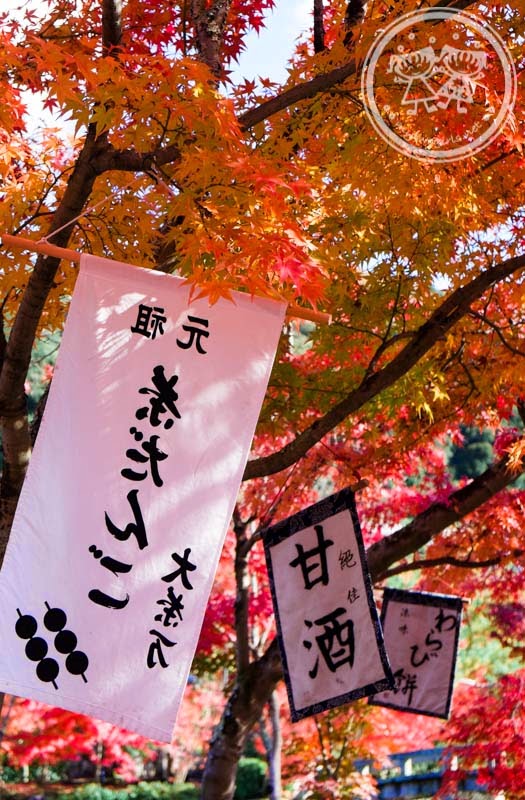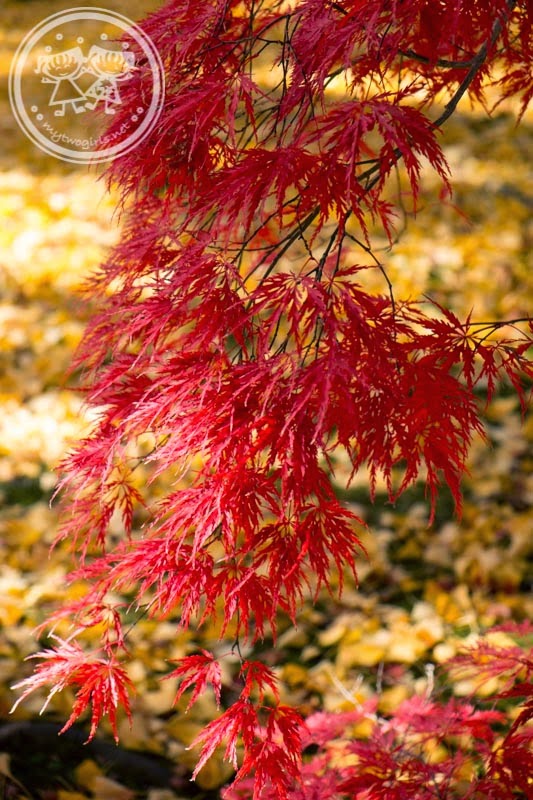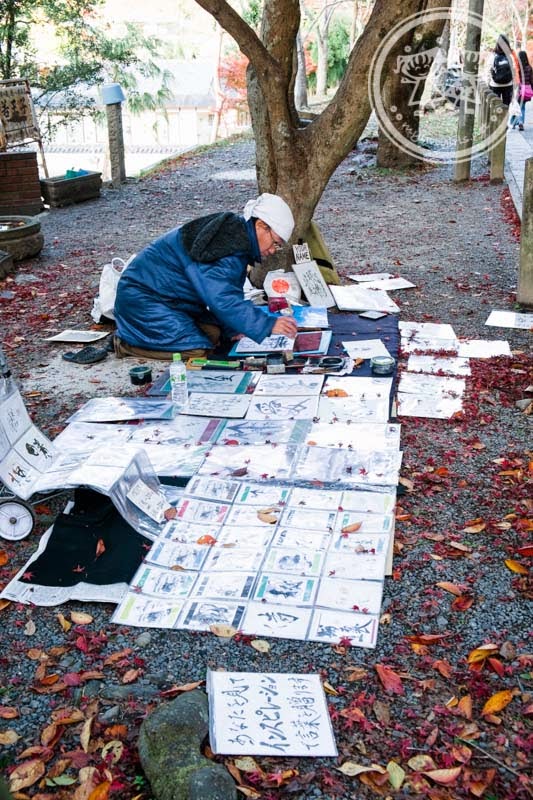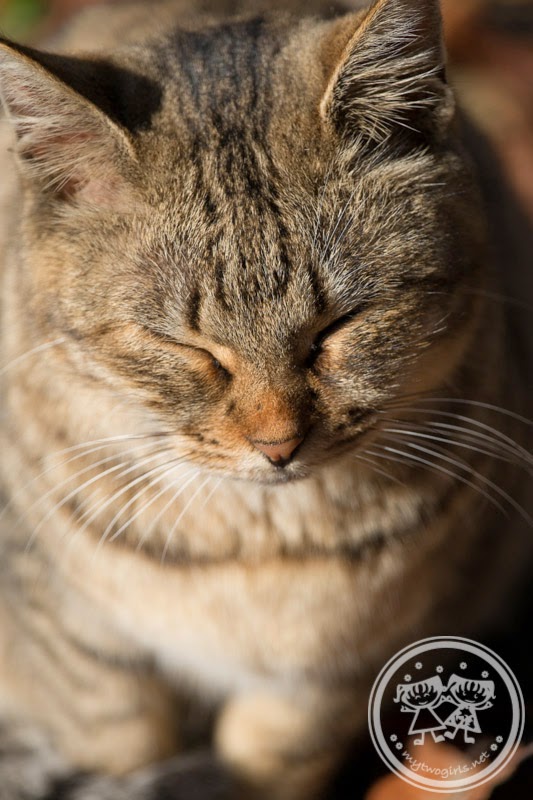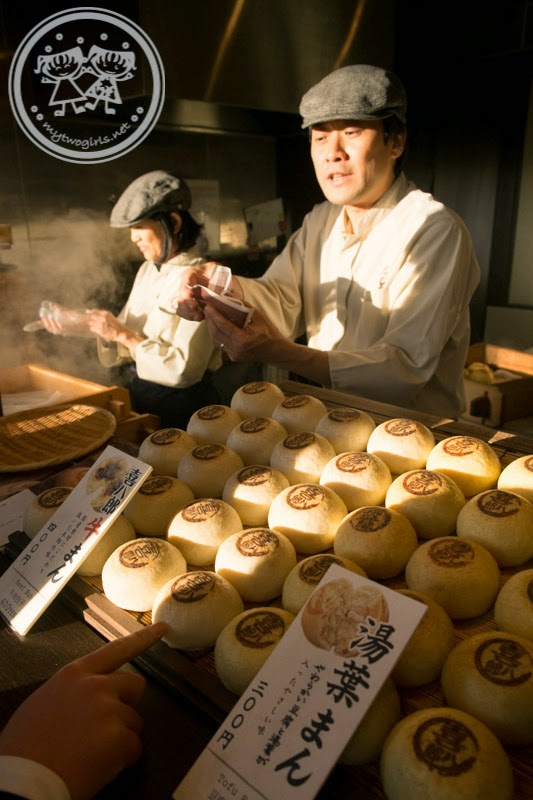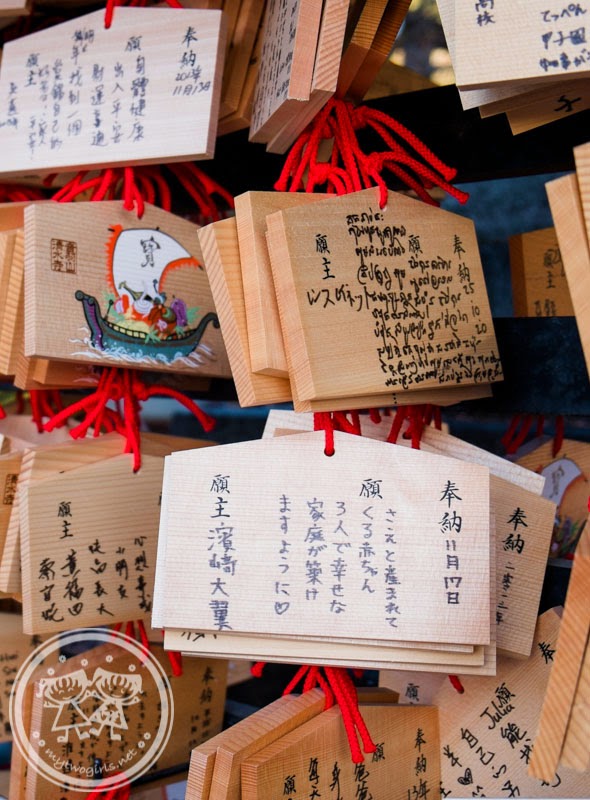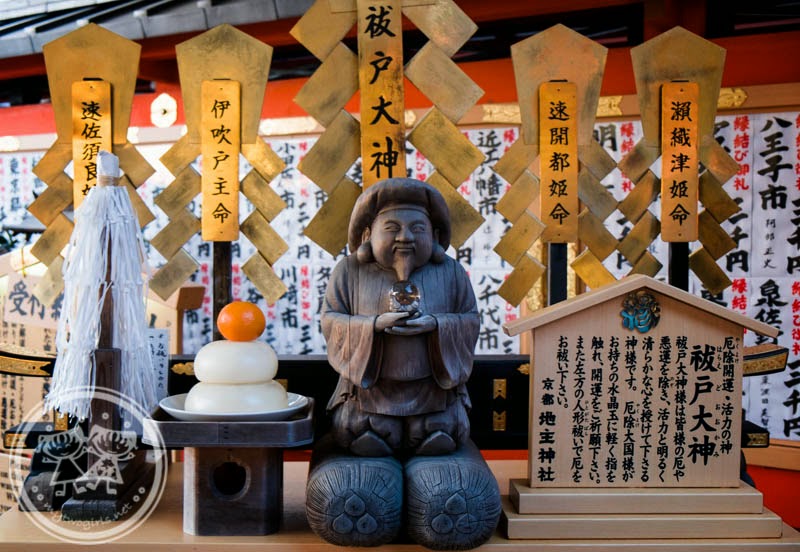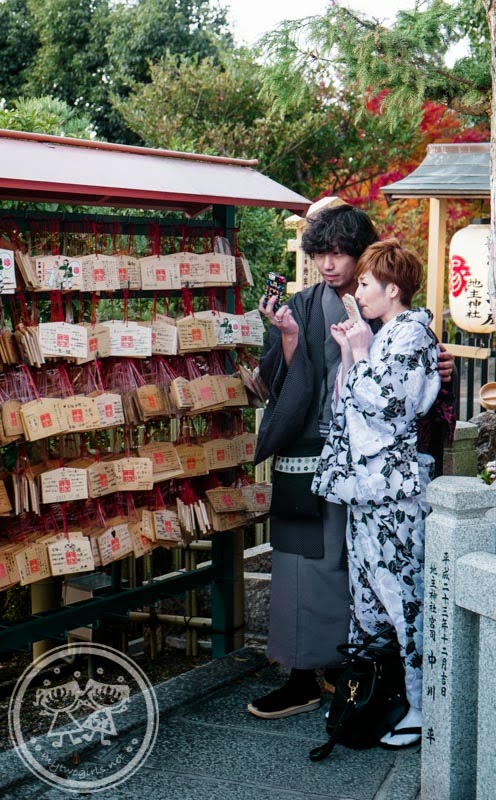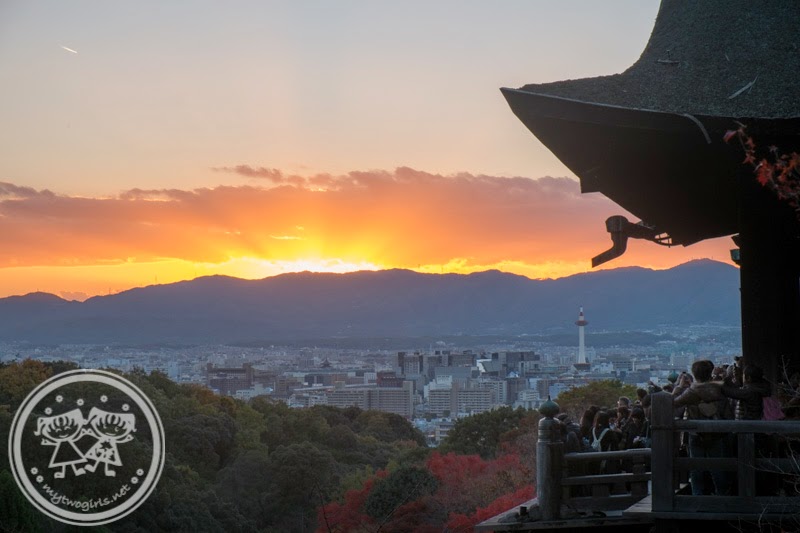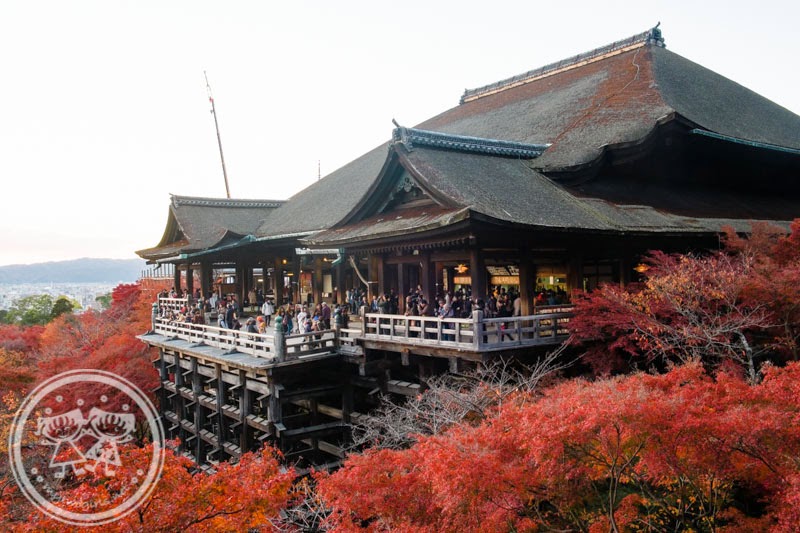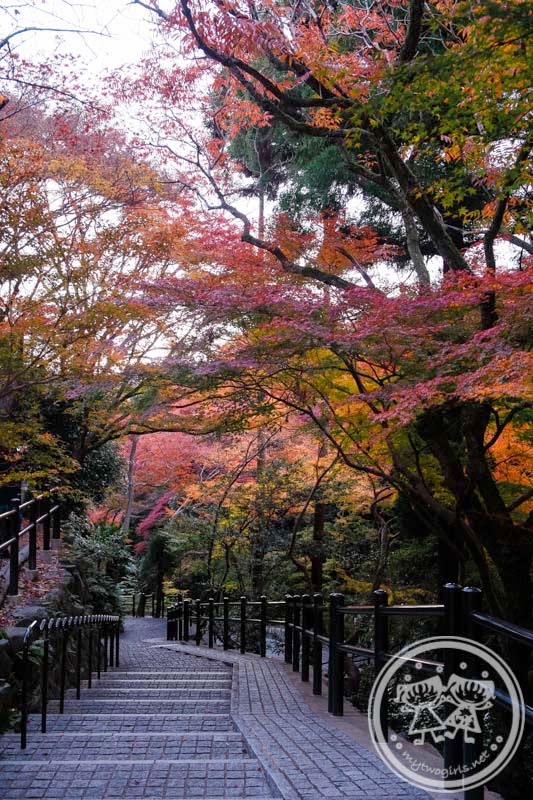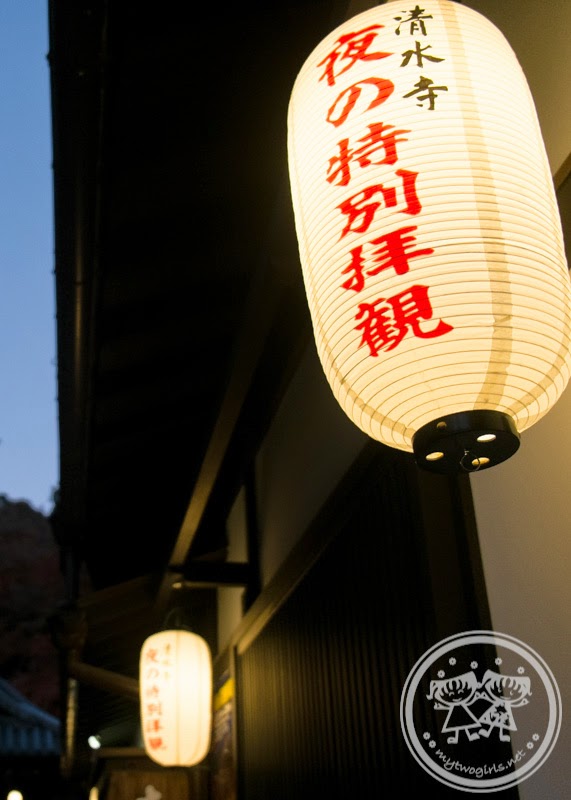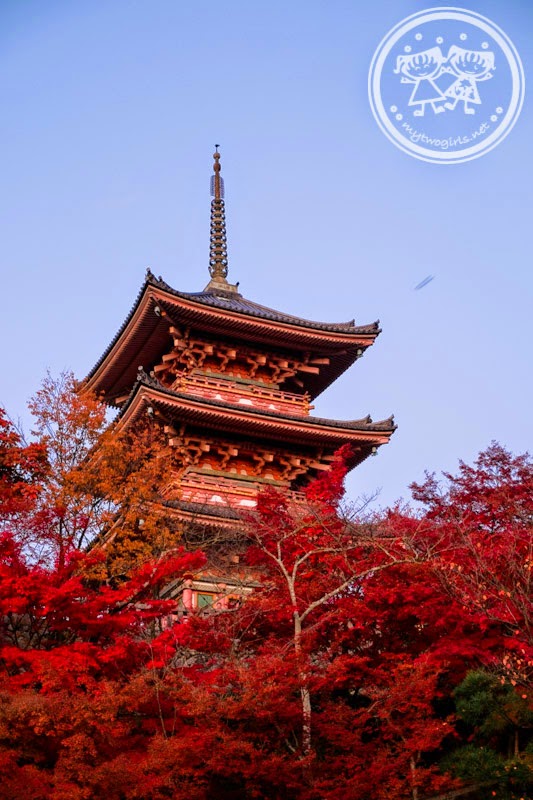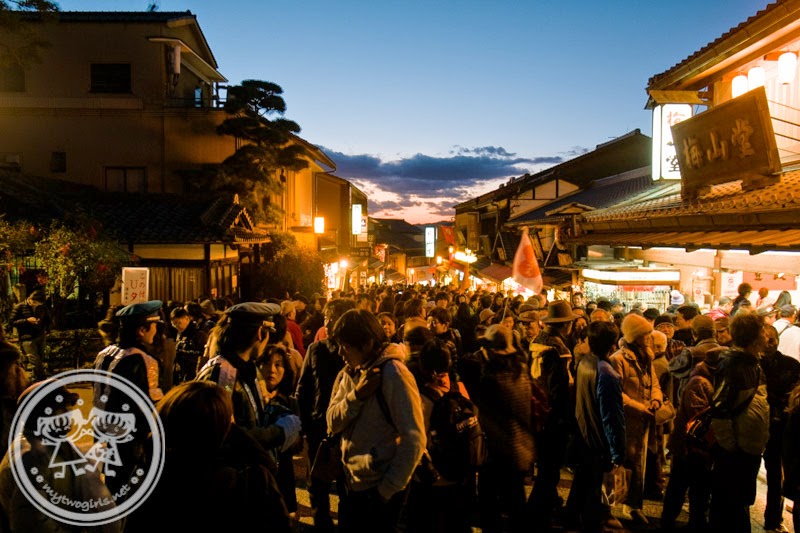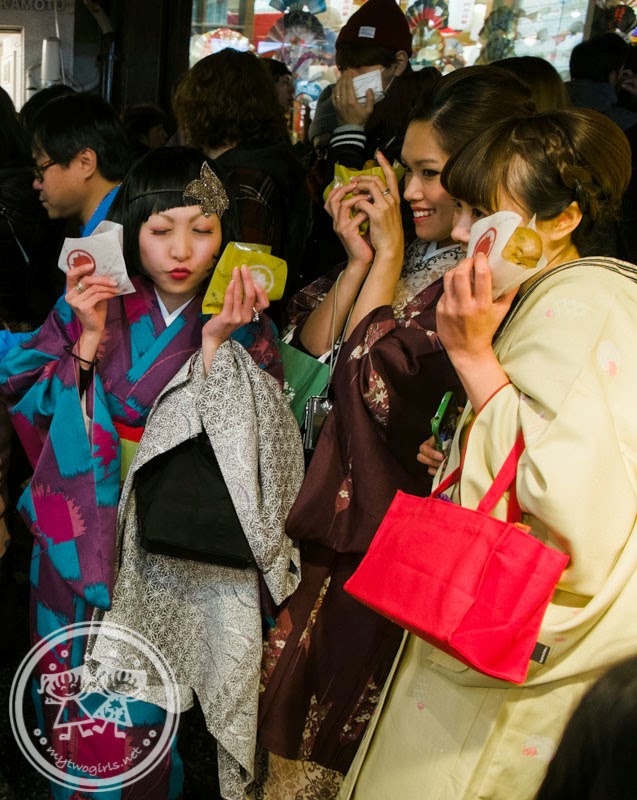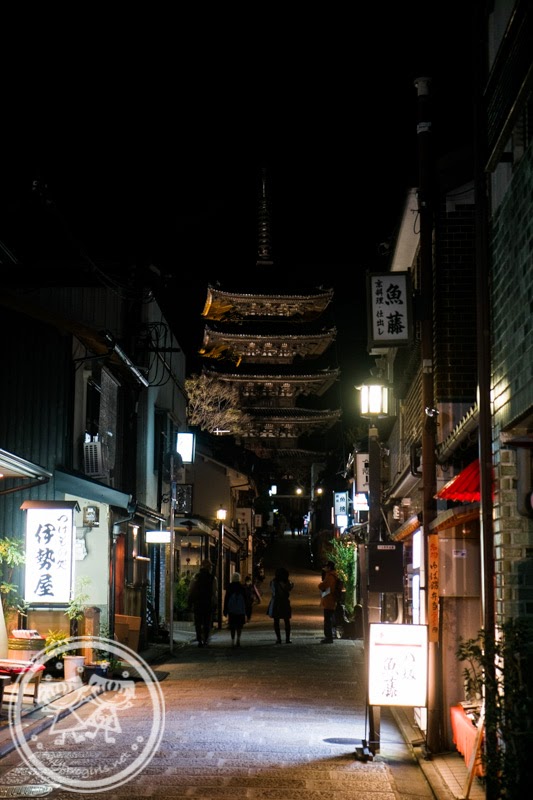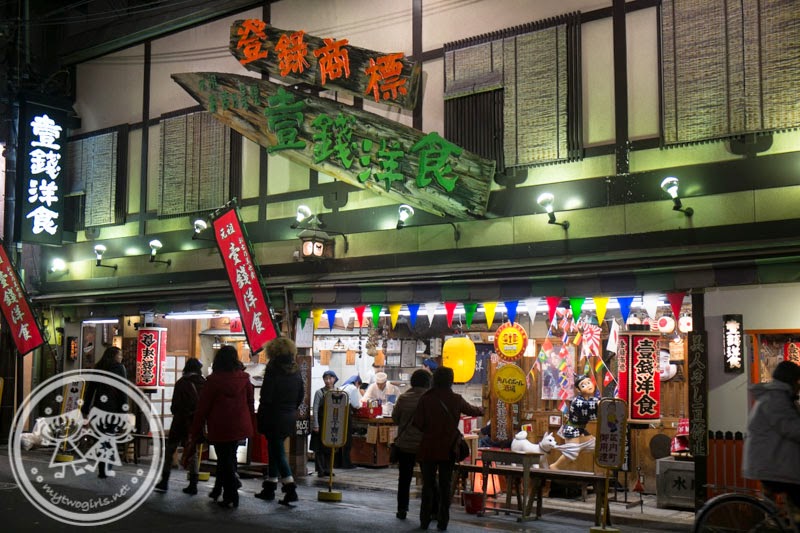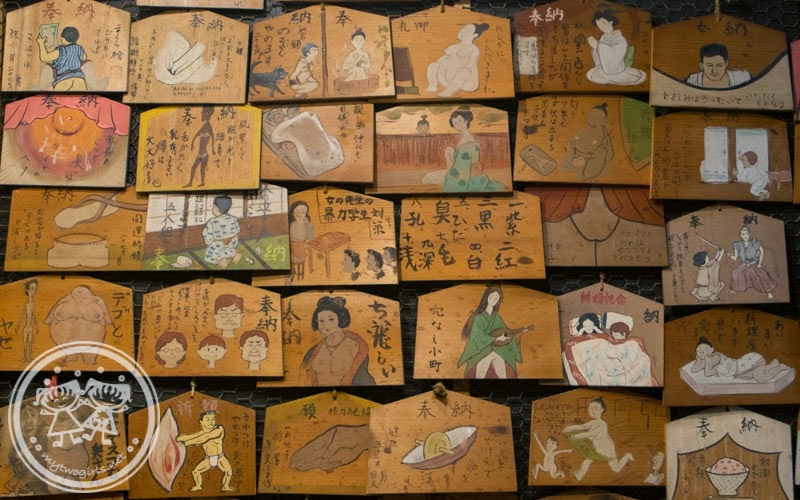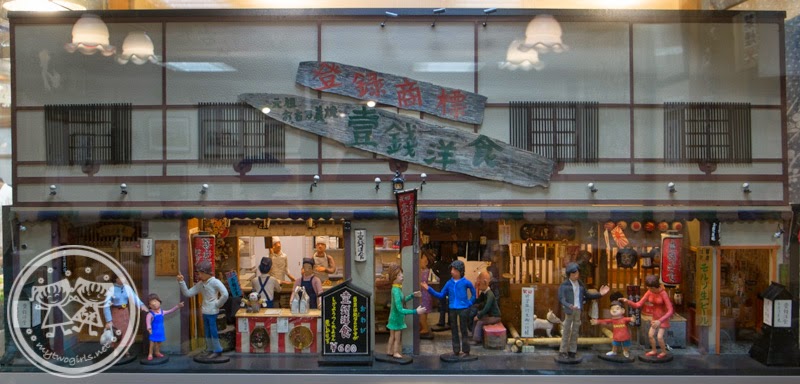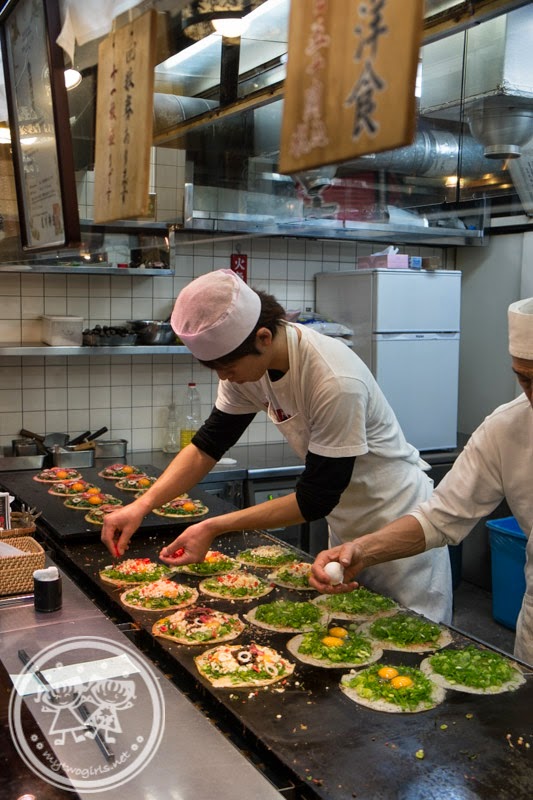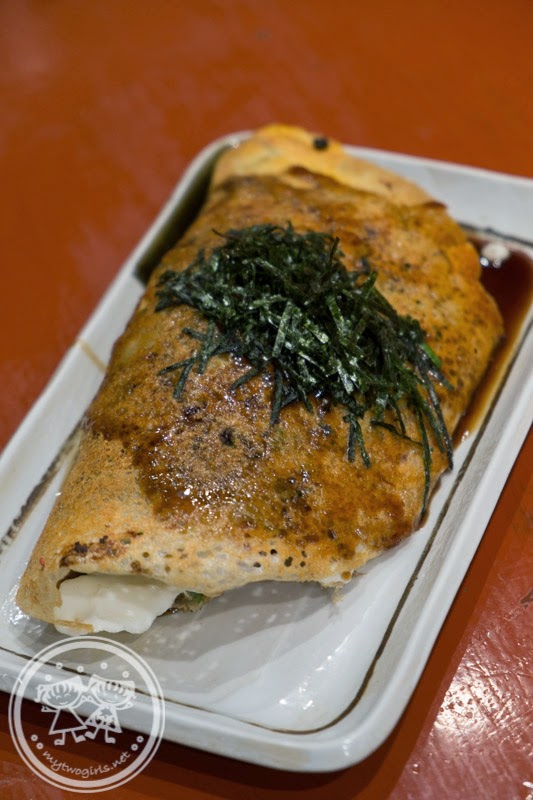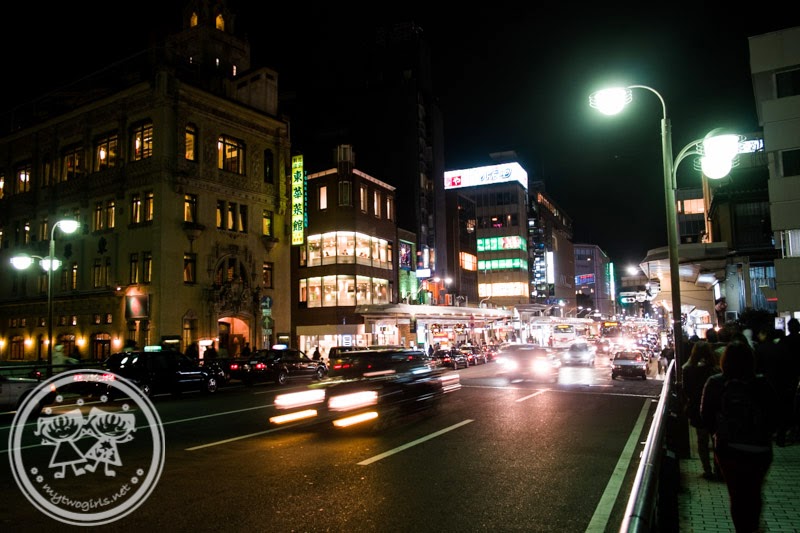When you go on a holiday and you snap a lot of photos, usually, you won't know what you'd taken until you started going through them one by one back home.
So, the hubs and I had taken over more than a thousand photos during our Japan trip, more than a month later, when I sorted out the photos taken on Nov 27th, I spotted these 4 persons in a photo the hubs took of the girls and I at the Fushimi Inari JR station, waiting for our train to go to Tokufuji. They were standing next to us (I'd cropped it to remove us from the photo) waiting for the same train.
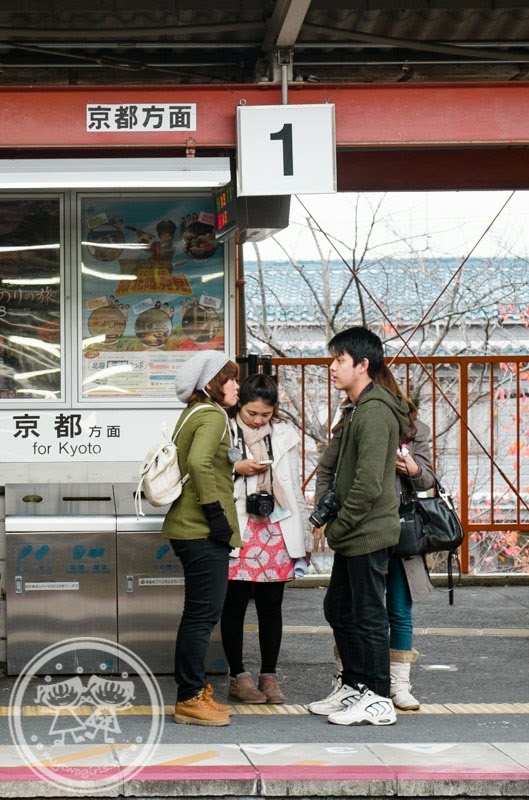
These 4 persons are Thais, who, 2 days later, stayed in the same farmhouse as us more than 270km away from where this photo was taken. They arrived the same time as us (they took the bus, we arrived by car), and because they insisted to have four of them stayed in 1 room instead of 2 rooms as suggested by the owner, we had to let them have the bigger room originally meant for us.
That day at the farmhouse, only 3 rooms were taken, the Thais took 1 room, we took 1 room, and another Taiwanese girl 1 room.
Even the girls were surprised when I showed them this photo. They found it strange that we 'accidentally' took the photos of the Thais in another city far away from where we actually met them.
Coincidence, fate or creepy? It's like twilight zone.
If you know these Thais, get them to contact me, we might as well get to know each other and maybe we'll be good friends.
So, the hubs and I had taken over more than a thousand photos during our Japan trip, more than a month later, when I sorted out the photos taken on Nov 27th, I spotted these 4 persons in a photo the hubs took of the girls and I at the Fushimi Inari JR station, waiting for our train to go to Tokufuji. They were standing next to us (I'd cropped it to remove us from the photo) waiting for the same train.

These 4 persons are Thais, who, 2 days later, stayed in the same farmhouse as us more than 270km away from where this photo was taken. They arrived the same time as us (they took the bus, we arrived by car), and because they insisted to have four of them stayed in 1 room instead of 2 rooms as suggested by the owner, we had to let them have the bigger room originally meant for us.
That day at the farmhouse, only 3 rooms were taken, the Thais took 1 room, we took 1 room, and another Taiwanese girl 1 room.
Even the girls were surprised when I showed them this photo. They found it strange that we 'accidentally' took the photos of the Thais in another city far away from where we actually met them.
Coincidence, fate or creepy? It's like twilight zone.
If you know these Thais, get them to contact me, we might as well get to know each other and maybe we'll be good friends.
